|
Saturday, 3rd April, 1.30
to 6pm
The plan was straightforward: Go to the Sandflats while keeping an eye on the sky and fingers firmly
crossed in the hope that a flock of cranes would make a grand entrance.
A walk around the sandflats for a couple
of hours yielded a flock of c130 Kentish Plover, I Grey Plover, 1 Great Knot; several hundred black-headed, c20 Mongolian,
several Vega, c100 Kamchatka, and 1 Black-tailed Gull (photo).
The ponds to the east of what
used to be the reservoir held 6 Garganey, 3 Shoveler (photo), a couple of Teal; as well as a few Daurian
Redstarts, c10 Vinous-throated Parrotbills, and a few Rustic Buntings.
The Sandflats' woods hosted c30 Red-flanked
Bluetails, 1 Naumann's Thrush, 2 Elegant Buntings and my first phylloscs of the year in Beidaihe: 2 Pallas's
(photo of 1) and 1 Yellow-browed. The reedbeds near here held 1 Kingfisher (photo) and several Pallas's
Reed Buntings.
Just as I was about to leave I saw 9 cranes... Alas, they were of the all too familiar constructionemesisi
variety ;-(
Will try Qilihai (again) tomorrow
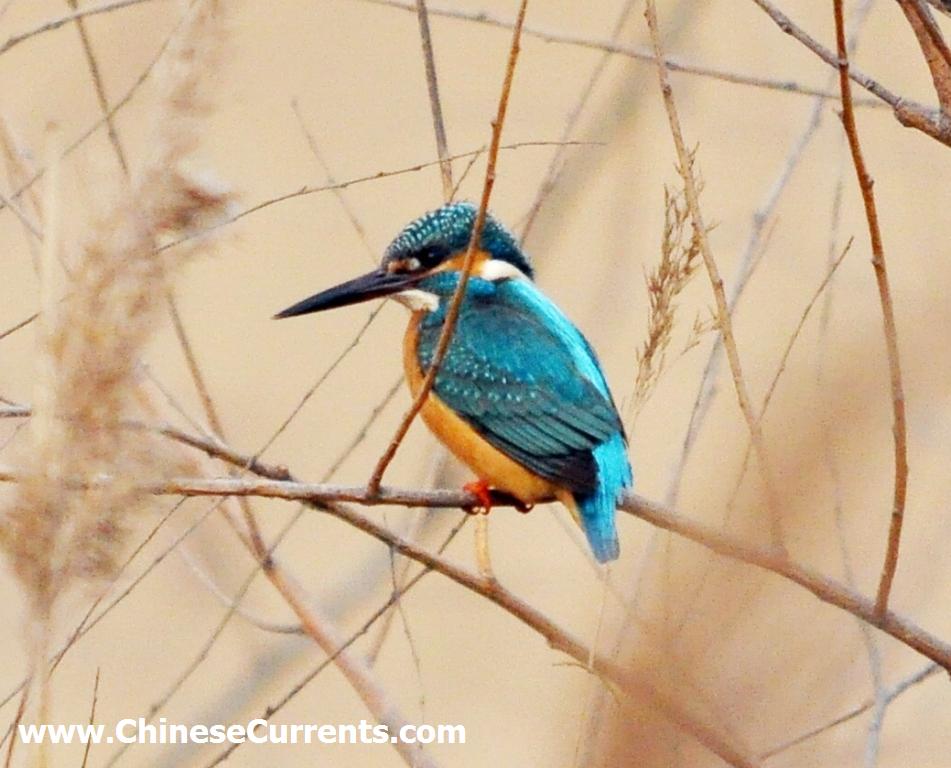
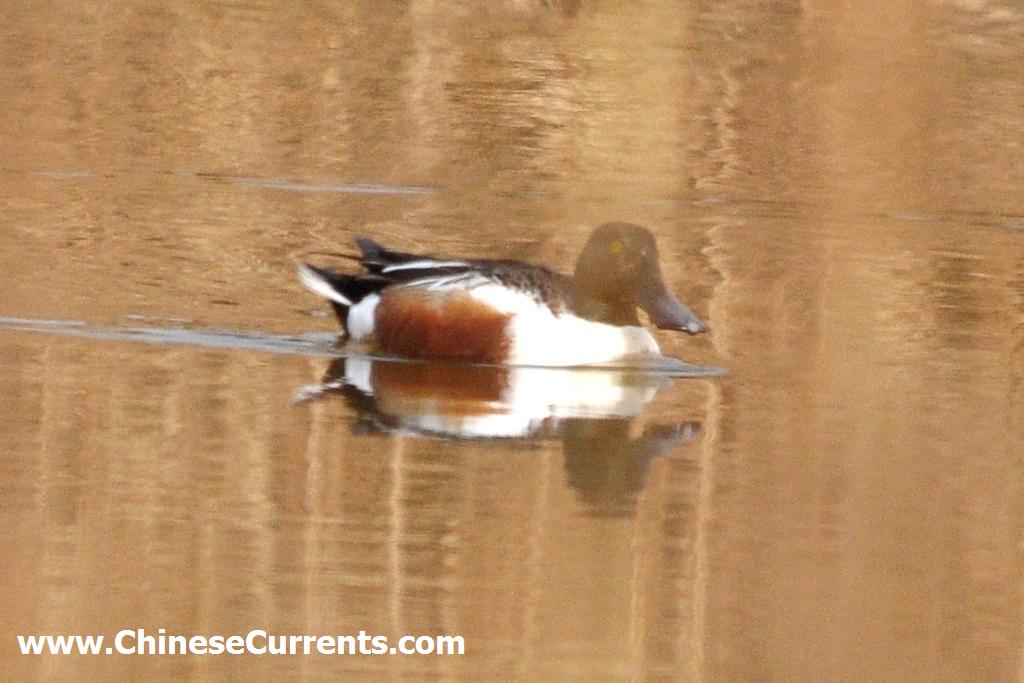
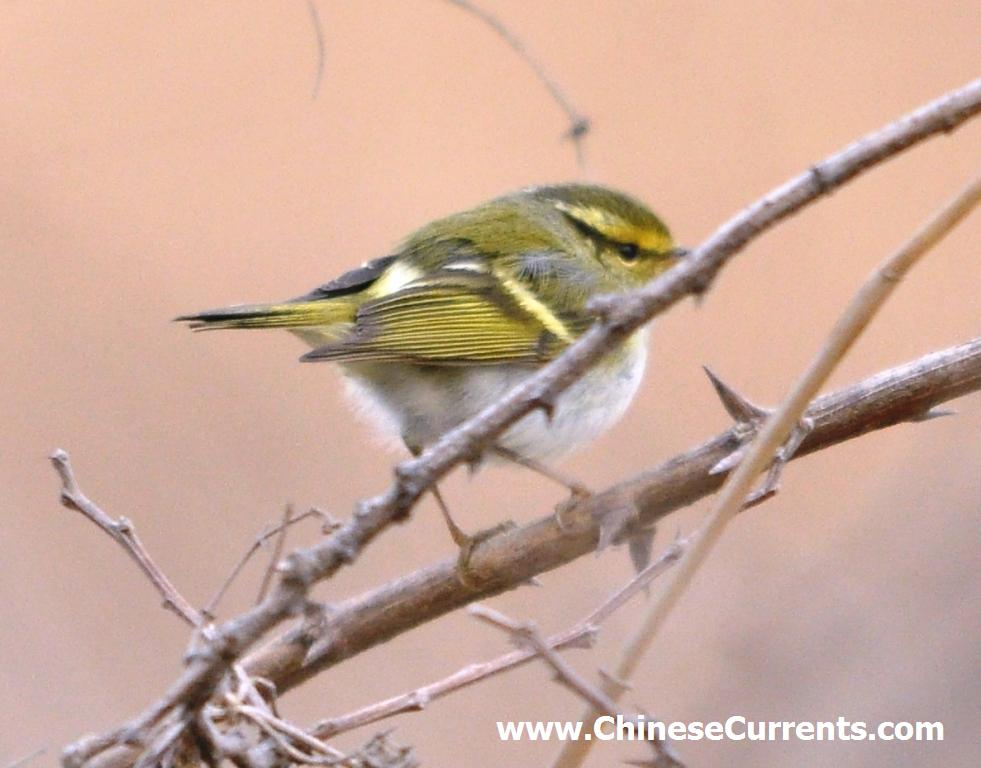
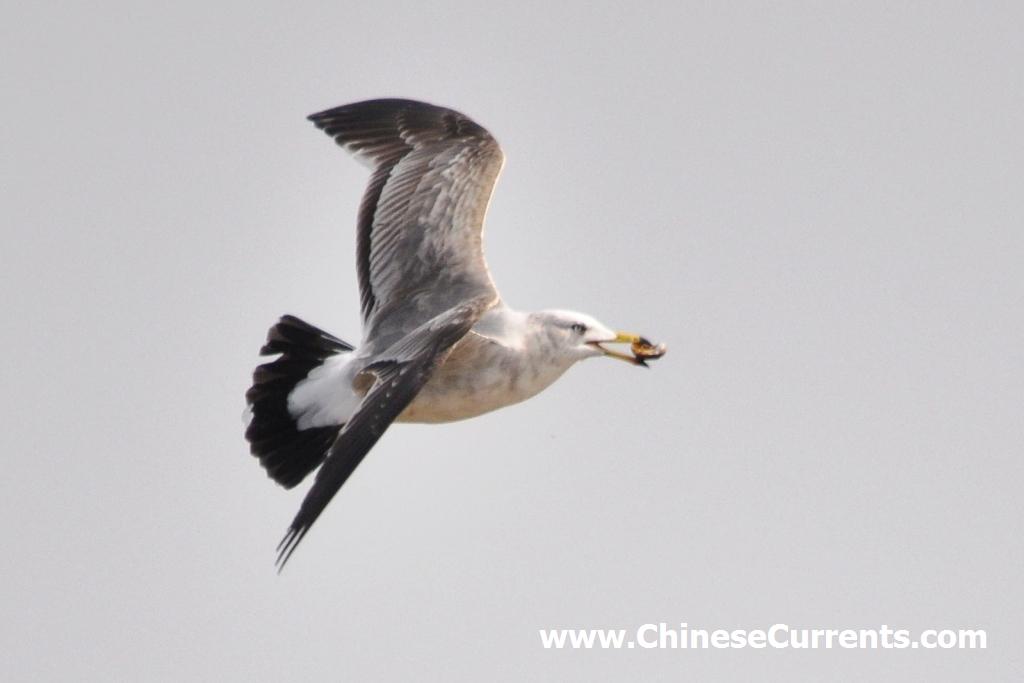
Sunday, 4th April,
9am to 4.15pm
Beidaihe, Nandaihe and Qilihai
No Vs, Ws, Ys, or whatever in the way of crane
sky-writing. Which, given that the flying-conditions were more or less perfect, doesn't bode well (for would-be crane-watchers
that is). In fact, there was nothing whatsoever in the sky (moving purposely in a northish direction) all day.
I
started off at the Nandaihe ponds - several of which, very sadly, have already succombed to the march of "progress"
(note to self: take a deep breath and try to avoid setting off on a thousand word rant). All I will say at this point is that
the saddest sight I've seen for a while was a pair of kingfishers taking turns to drill out a nesting hole in a temporary
sand bank made by the bulldozers. The futility of this was just too upsetting to photograph.
Not the best start
to the day (for them or for me).
The Grey-headed Lapwing I saw here - my first of the spring - did nothing to
lift my spirits.
On to Qilihai - which I'm liking more and more, because it's the one place in the region where
you can't hear and see construction work.
It's interesting to see the turnover of birds in a short period of time
(this was my 3rd visit there in 6 days). The new arrivals were a pair of Black-winged Stilts [I had seen a dozen earlier at
the Yang river in Nandaihe, with 4 Garganey there also], a Common Sandpiper, 2 Siberian Stonechats, c50 Far Eastern Curlew
(I didn't see a single Eurasian today), and far more Hoopes (c20 here).
Avocet numbers were down to c100 (from
c400 on the 30th March); and Eastern Black-tailed Godwits to c60 (from c100).
Will try again for Eastern Water
Rail and Japanese Reed Bunting tomorrow at Sandflat's reedbed, while keeping an eye out for approaching cranes (and bulldozers). Photos of: 245 Grey-headed Lapwing (monotypic)
246 White
Wagtail (sp leucopsis)
247 Black-winged Stilt (monotypic)
248 Common Sandpiper (monotypic)
249 Common Teal
(nom ssp crecca)
250 Japanese Quail (monotypic) and
a flock of Shelduck and Black-tailed Godwit
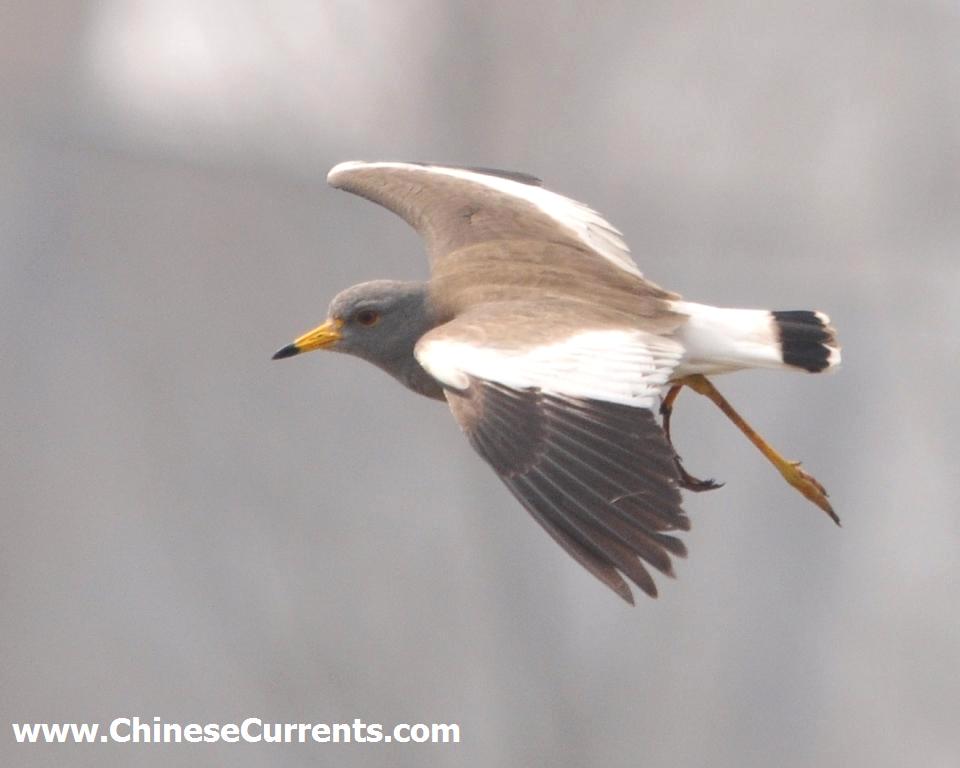
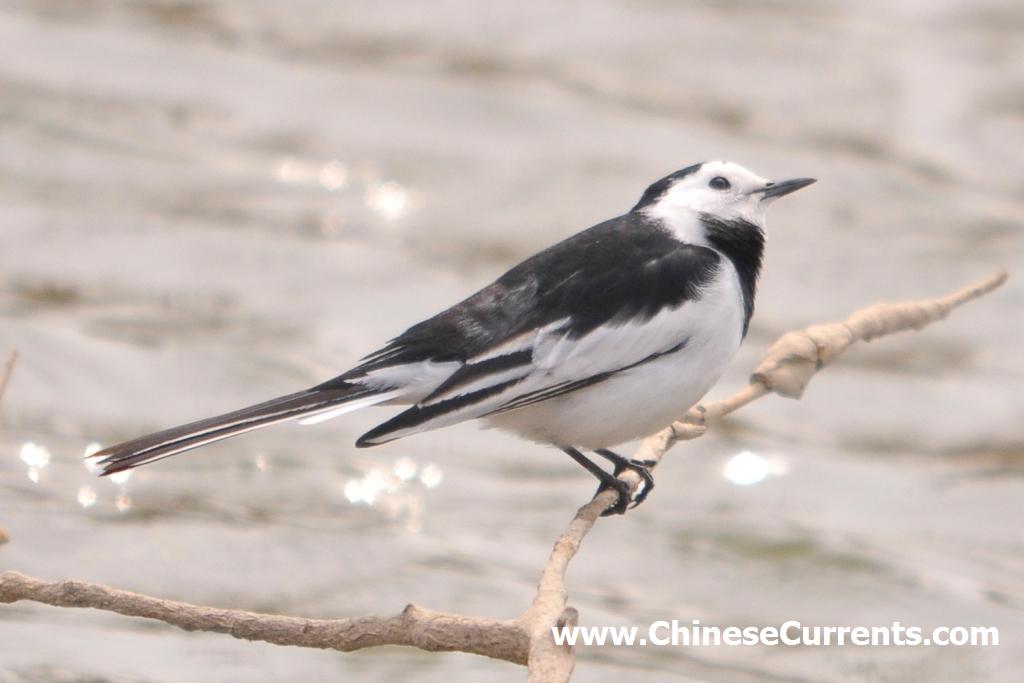
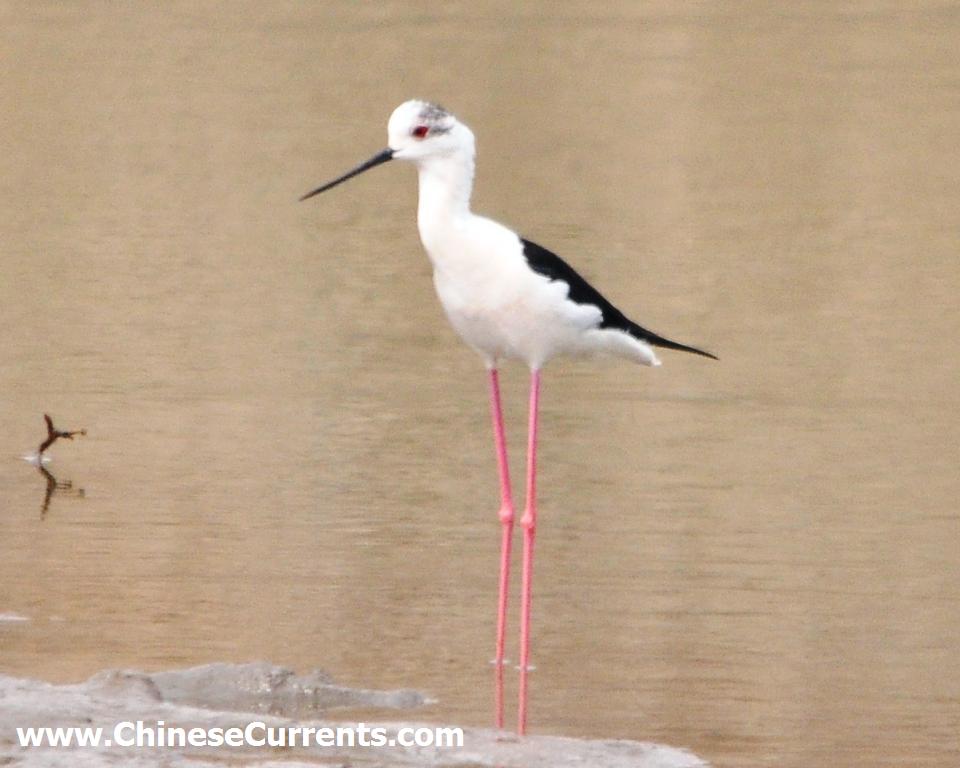
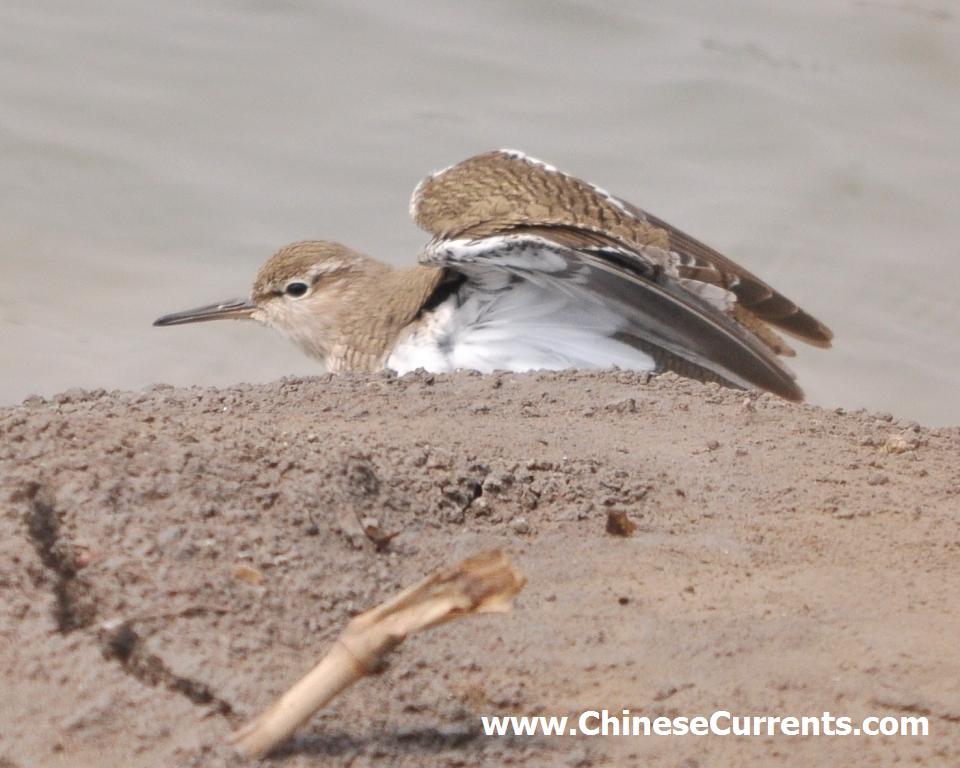
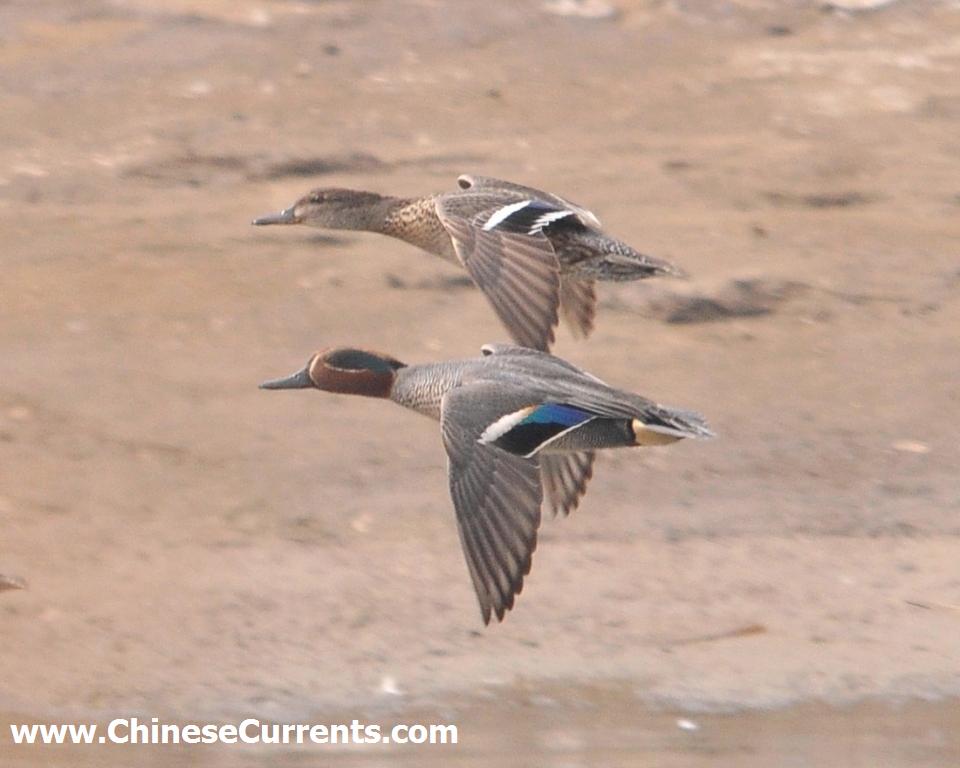
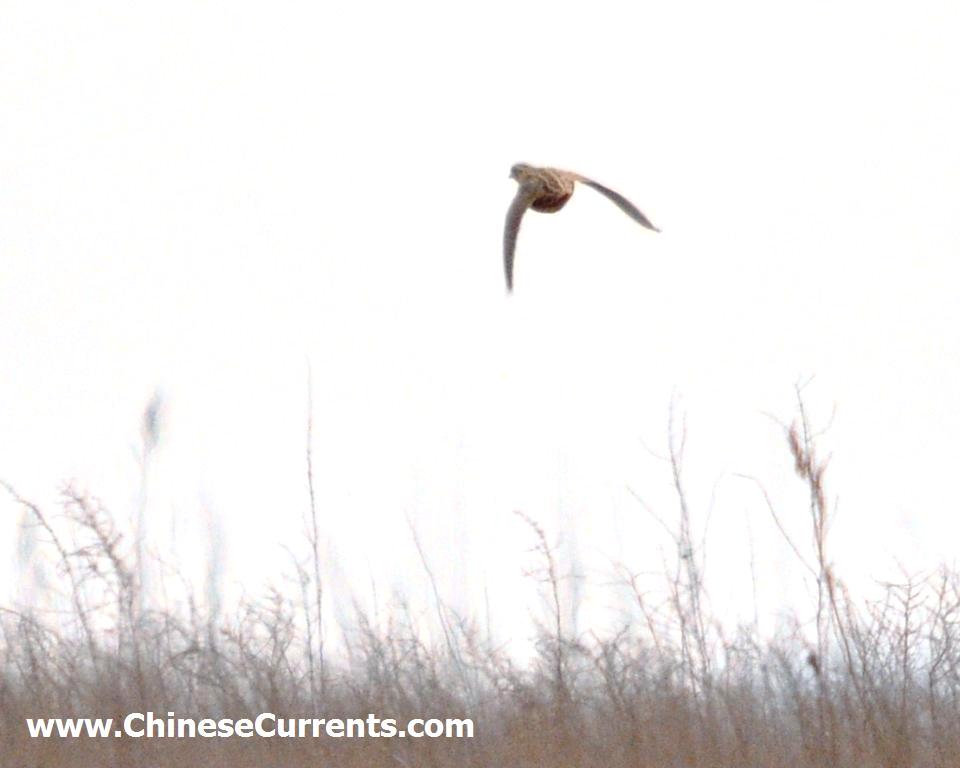
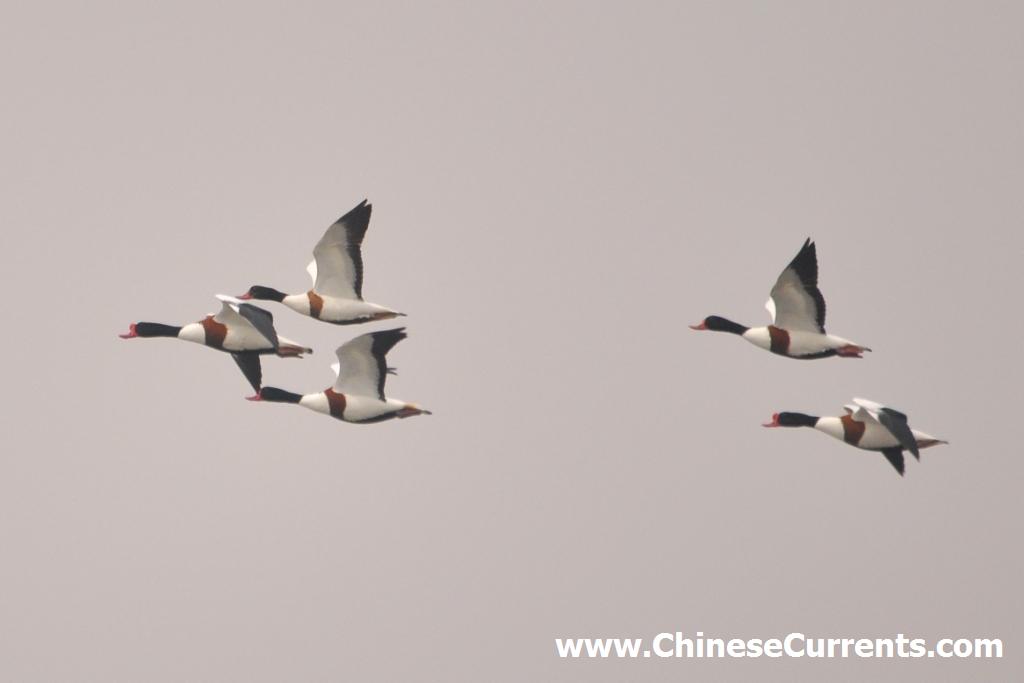
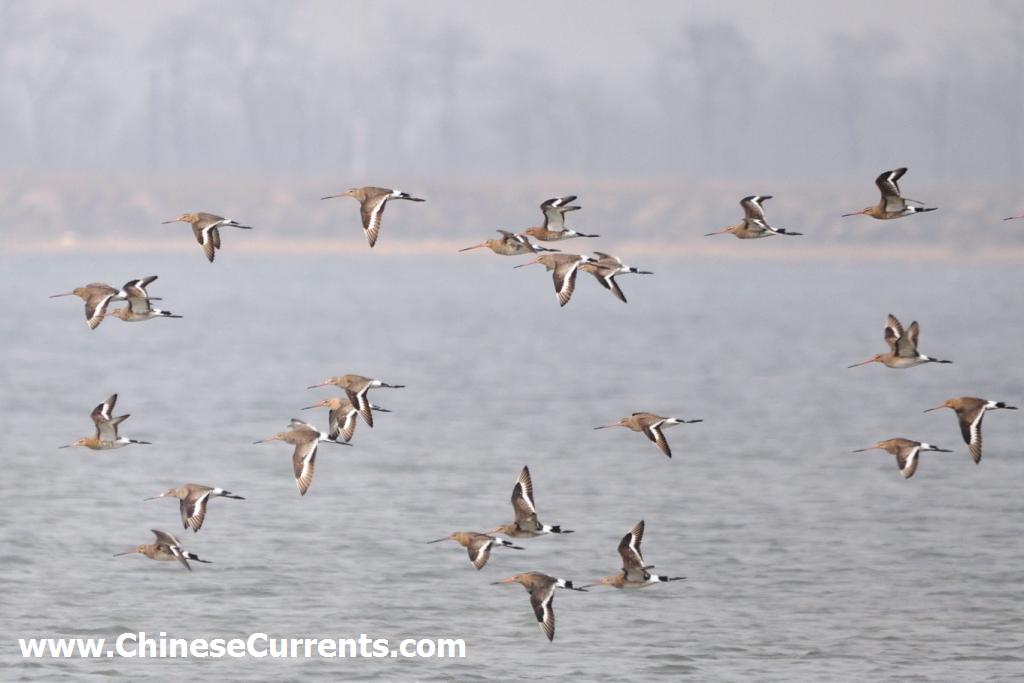
Monday, 5th April,
7.00 to 12pm Beidaihe,
Sandflats and "Reservoir"
A bitingly cold and penetrating easterly wind, gusting to gale force,
made birding on the Sandflats challenging to say the least. A Spotted Redshank (251) was new for the year as were chapped lips and chin. The drained reservoir provided ideal conditions for pipits. Thee birds fed in close proximity: a Water
Pipit ("first" photo) and two Buff-bellied Pipits (252) - 2nd and 3rd photos of the two birds (The
first bird appeared marginally leucistic).
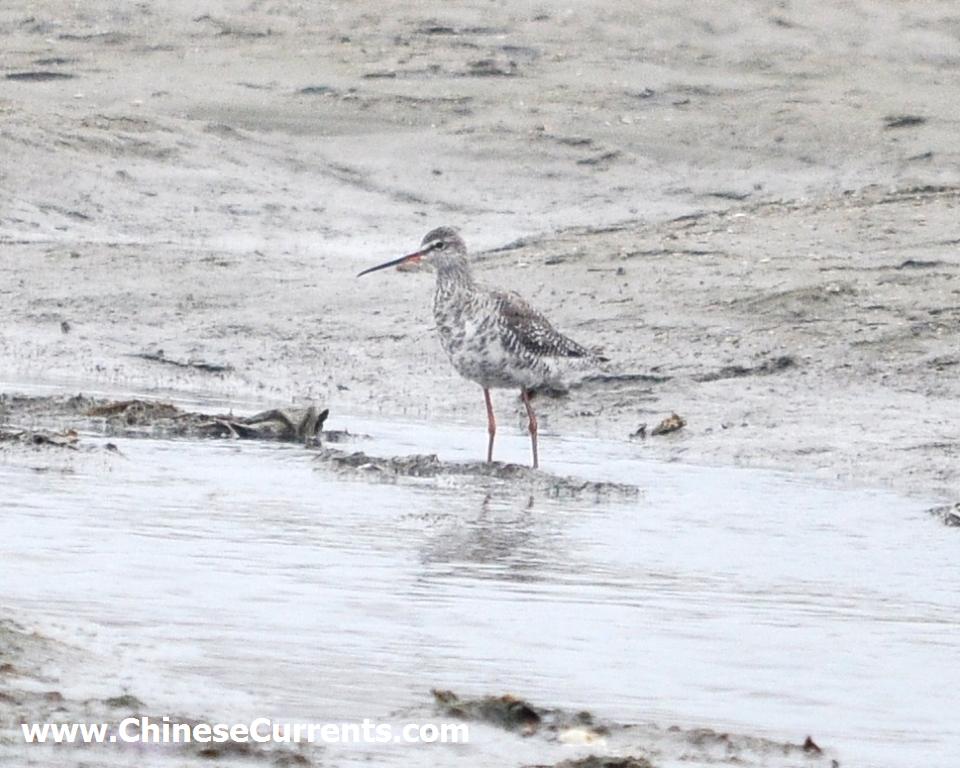
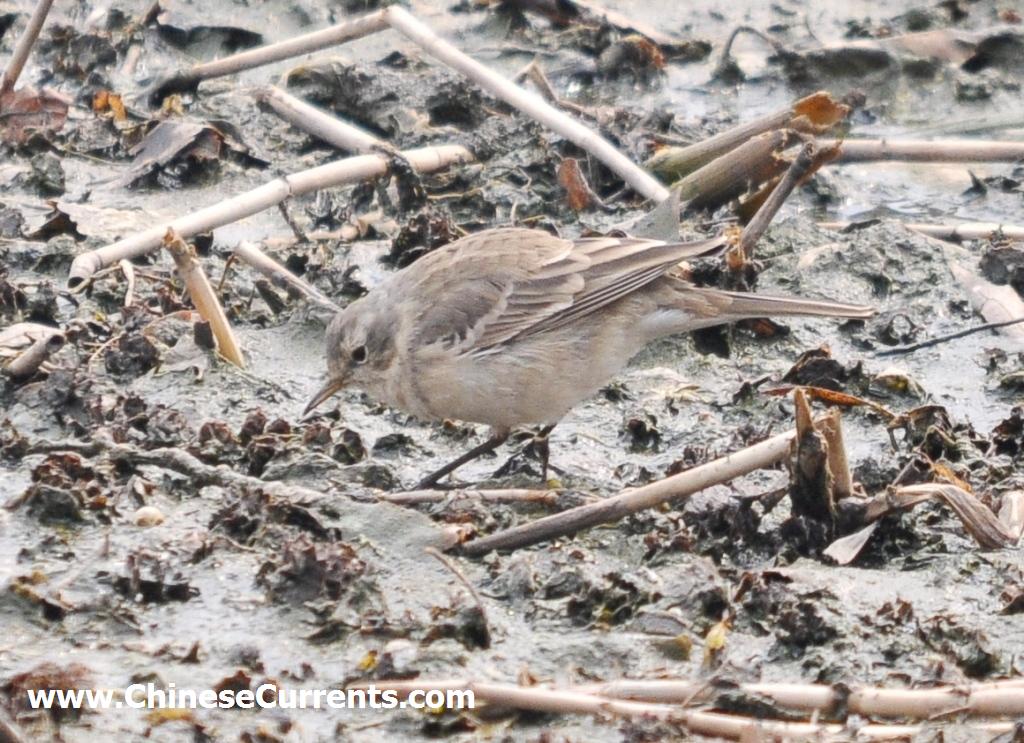
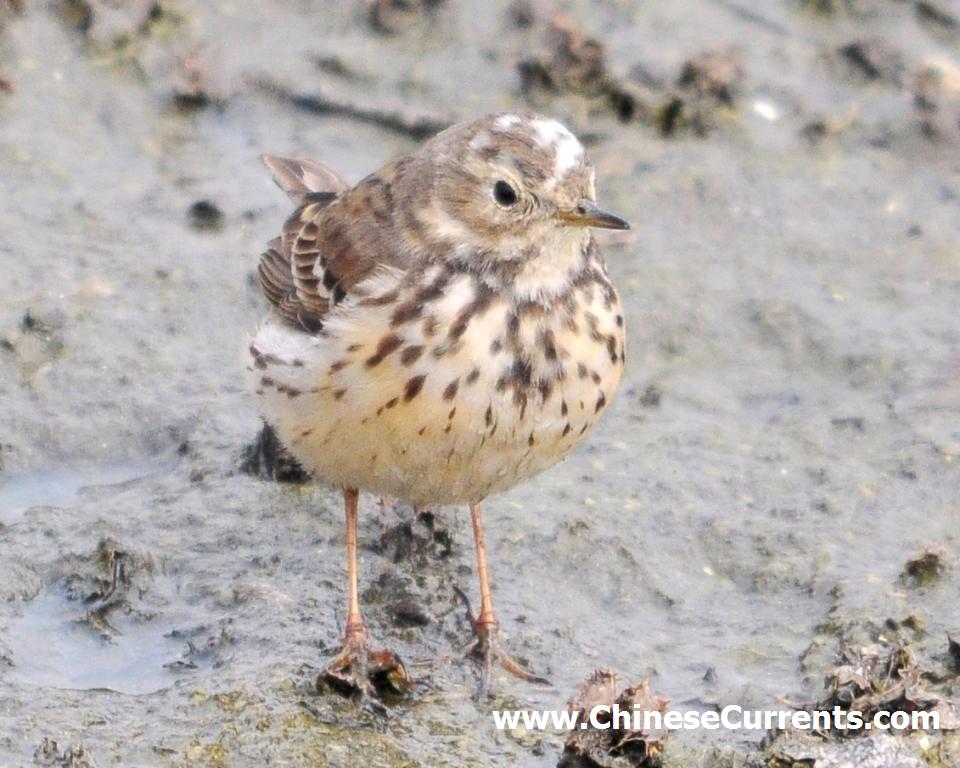
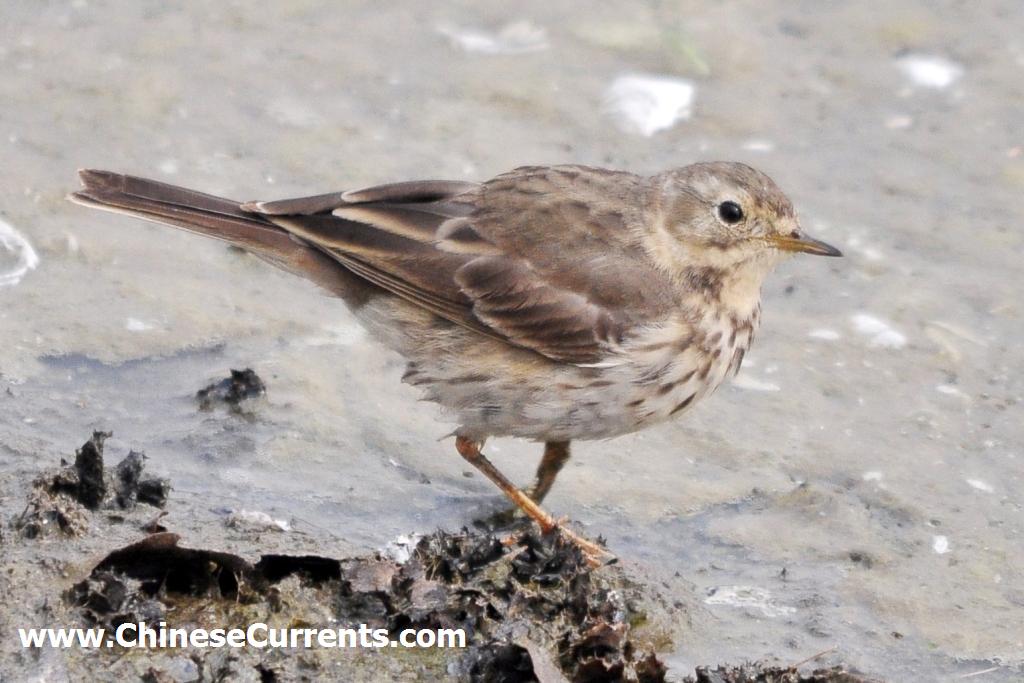
Tuesday, 6th
April, 9.30 to 6pm
The Lotus Hills were quite lovely, as was the view from the top, from where you could
see beyond the white igloo monstrosity just before Qilihai, about 20 bird-miles away. The thing that struck me as I stood
on top of the highest peak there was the complete lack of visible migration. There wasn't a single bird in the azure sky -
despite the seemingly ideal migration conditions. How odd.
But birds had arrived. I saw more Red-flanked
Bluetails (photo) here in a few hours than I'd ever seen in a single day anywhere. About 50 birds.
An
"Asian" Goldcrest (253), ssp/sp japonensis, which I rank as quite a scarce passage migrant in these
parts, was new for the year; as was the Black-faced Bunting (254) . Also, several Brambling, 3 Elegant Buntings
and a few Daurian Redstarts (photo) were also nice to watch.
The Friendship Hotel at Beidaihe
is one of the migration hot-spots in May. Today, though, I didn't even see a single Bluetail here, which is surprising given
that a plane load had touched down a mile or so to the west. Just outside the gardens, though, was a small group of Chinese
Grosbeaks (photo), including an immaculate male that very kindly twisted its head in my direction as I was lining
it up in the viewfinder.
No matter how old you are, there's always a few new things to see. During my 2 hour walk
to Qinhuangdao, I saw three things I've never witnessed before.
The first was a marauding flock of bird photographers.
I'd seen them in China before, but never in such numbers, and never so heavily tooled up. BTW I refer to them as "them"
because, although I don't have anything against (most) bird photographers, I do have a policy of only taking photographs of
birds I find myself , so it's not often I find myself in the their company.
Anyhow, this lot had surrounded a
flock of gulls on the beach. They were doing what bird photographers tend to do... inching forwards to get a better shot than
the last shot. I went back to watching my "own" flock of gulls, several hundred yards from them. While I was photographing
an interesting medium-size gull that was showing characteristics of Common Gull, I heard a man screaming. I turned to witness
a very odd sight indeed. One of the photogaphers had broken away from the group and was charging towards the line of gulls,
with his camera held out in front of him like a gun. If gulls have ever rolled their eyes and shook their heads before flying
off, then this was the time to see it. The bucket and spade brigade often disturb feeding and resting waders and gulls on
the Sandflats, but there's now a new threat... the Banchee Photographer.
I re-focussed my attention on the bird
that looked like a "Common Gull". I had been looking for one of these (on and mostly off of course) for years, and
there it was... a bird that had both things, if my understanding is right, that constitute a heinei Common
Gull (255) : pale [khaki?] legs, and a same-colour, ringed bill. It was standing near to a bright yellow-legged and
bright-yellow (unringed) billed Kamchatka Gull which helped a lot of course. So, if I'm right (have a look at the photo and
decide for yourself), it's a "new" bird not only for the year, but also for my China list. In case you are wondering,
The BBBC recognise Kamchatca Gull (monotypic) and Common Gull (ssp henei) as distinct species. And The BBBC list
is the list that counts of course. Please
I looked behind me and, seeing that the Banchees were approaching, I
decided to get as far away from them as possible... and set-off to walk to Qinhuangdao. Photos of a Black-tailed
Gull (2 photos), a summer-plumage Kentish Plover, and a Mongolian Gull on
the way.
After three or four miles, and having survived a raid from a scout, who began waving his camera-free arm
at a flock of gulls I was watching (until I shouted at him), I saw something gold ginting on the sea, about a 7 iron (150
yards) out.
This was the third thing I'd never seen before: A Black-necked Grebe actually on the Bo sea (In
China, up until then, I'd only seen them on ponds and lakes). I watched and photographed it for several minutes as it was
diving and surfacing with glistening small fish, before I noticed another one close by. Getting the two together
in the same frame (and both in focus) proved to be too difficult.
As luck would have it, about a mile further down,
I found another pair of summer-plumage Black-necked Grebes (256) among a flock of Goldeneye,
that were slightly closer-in. Not a great photo by any stretch of the imagination, but getting any photo of a pair of BNG's
swimming together on the sea in China can't be that bad a shot.
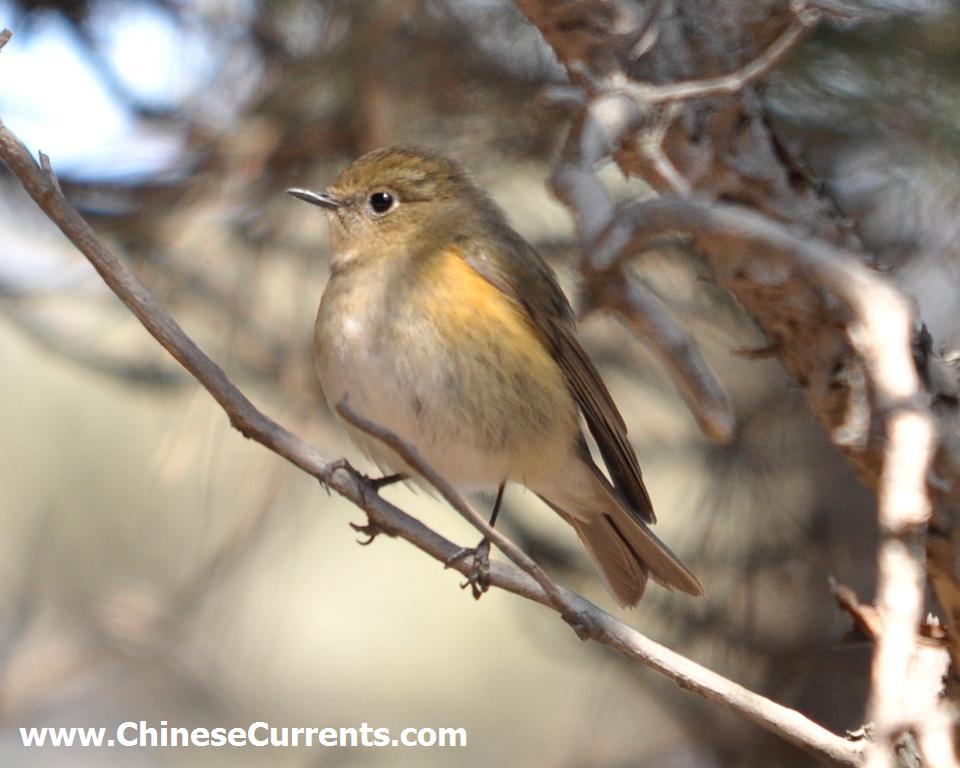
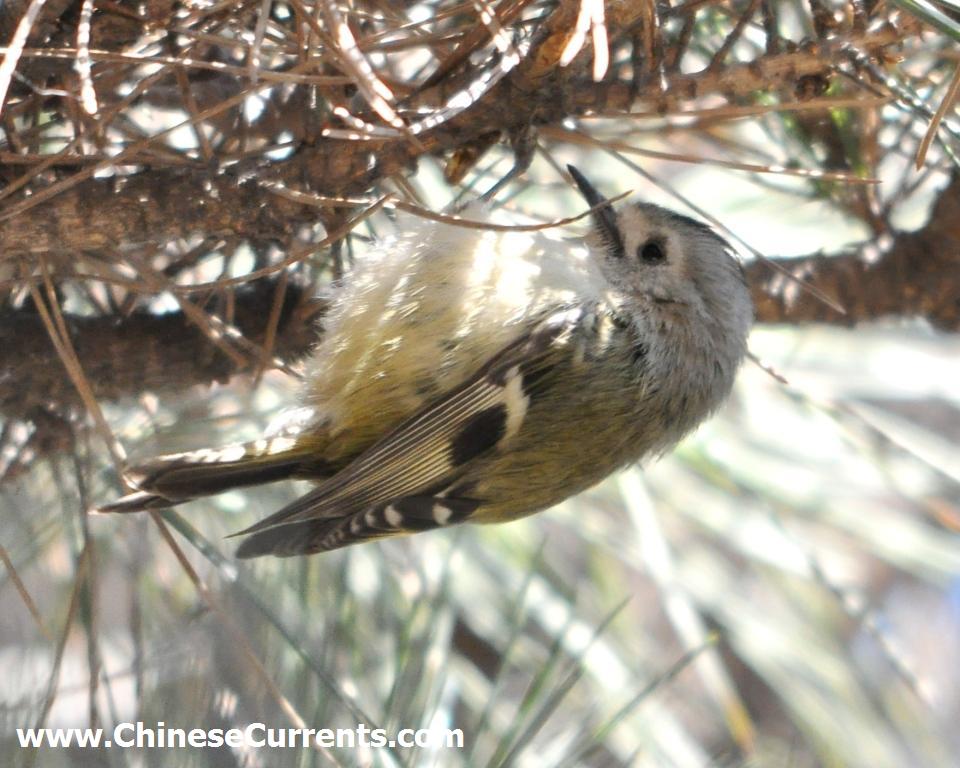
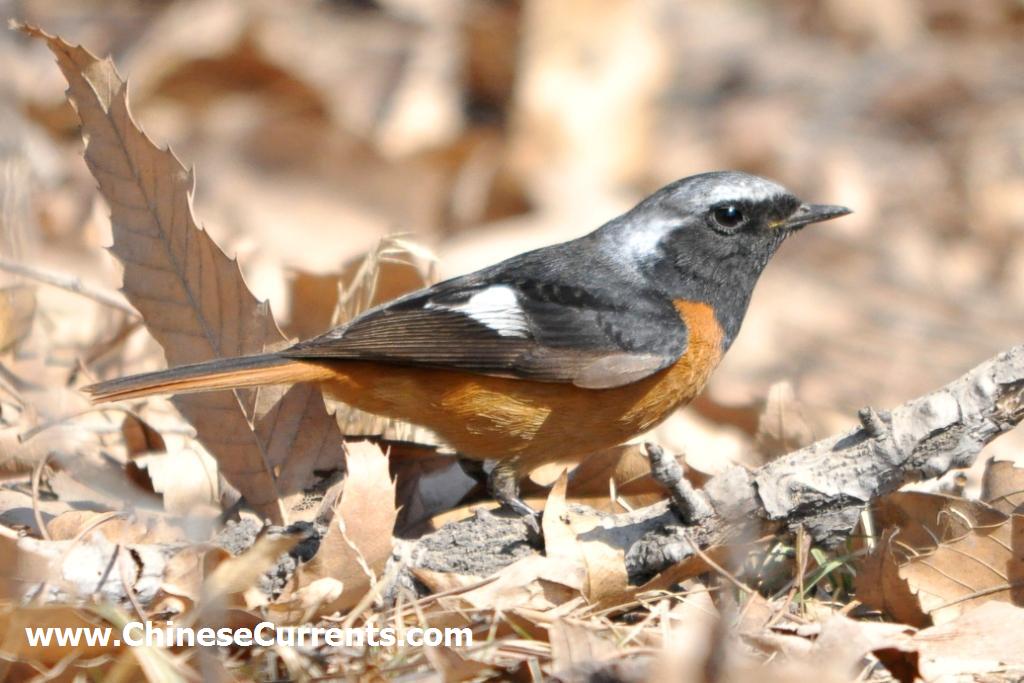
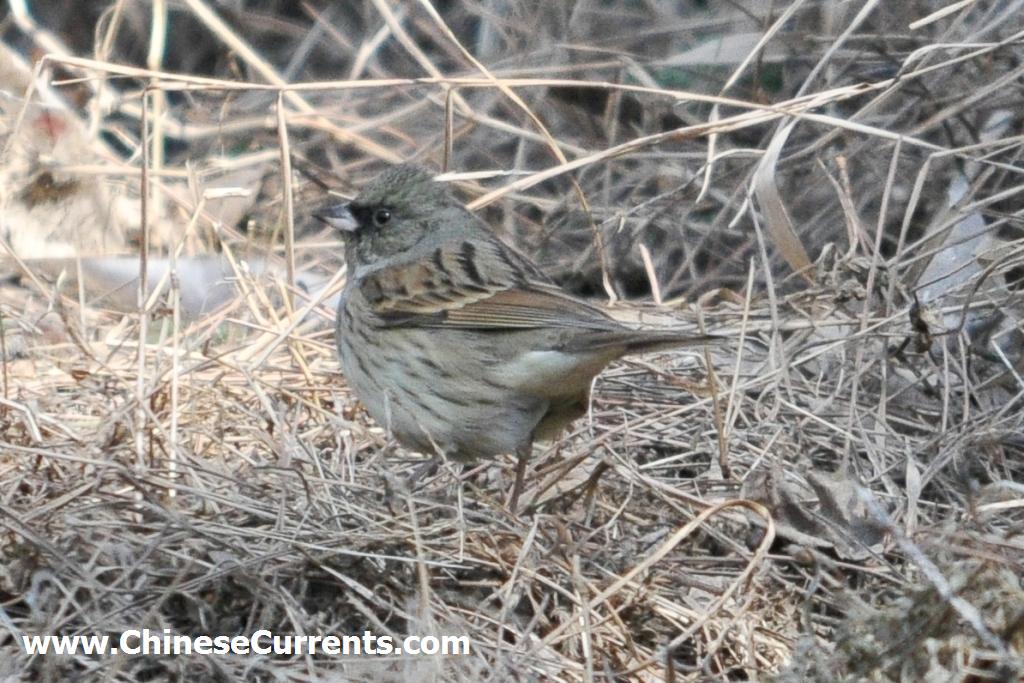
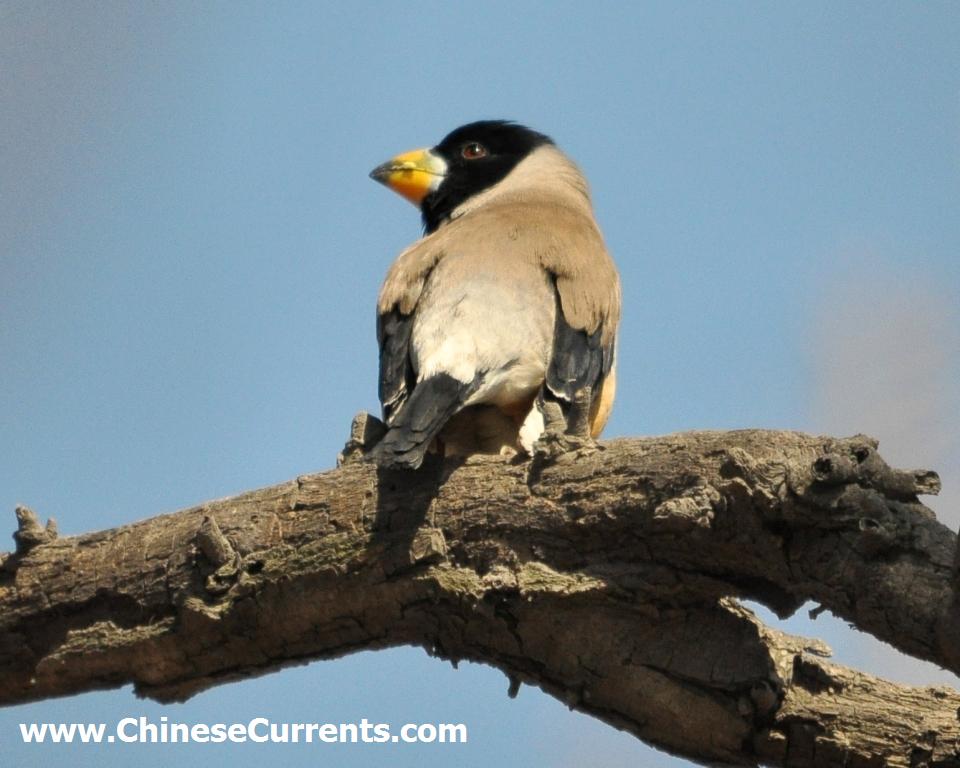
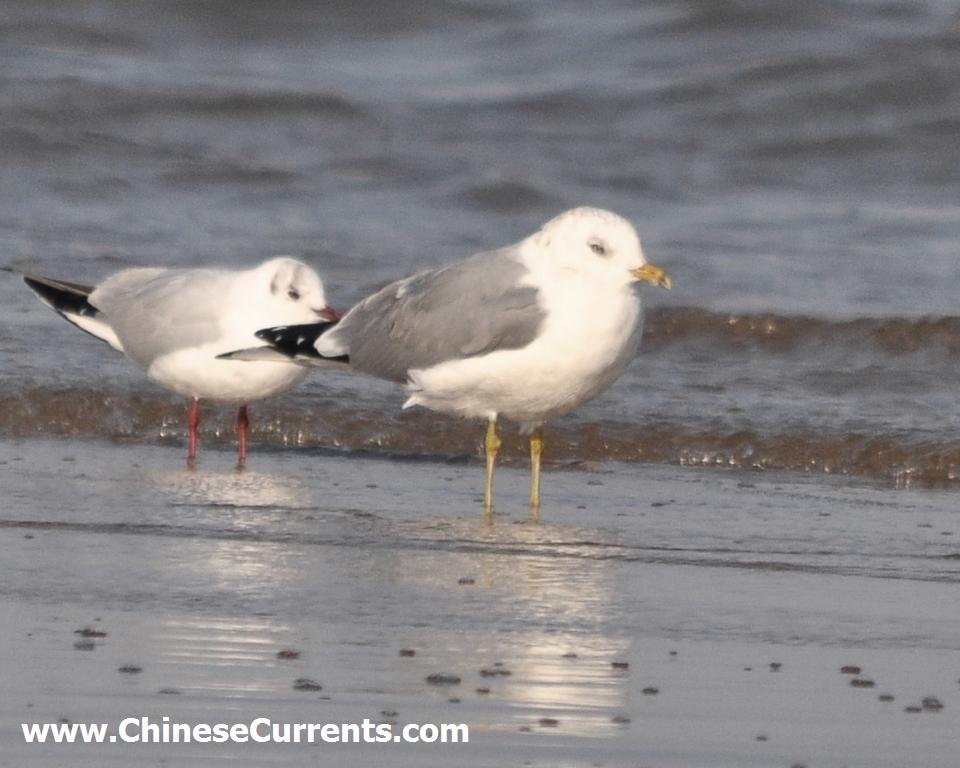
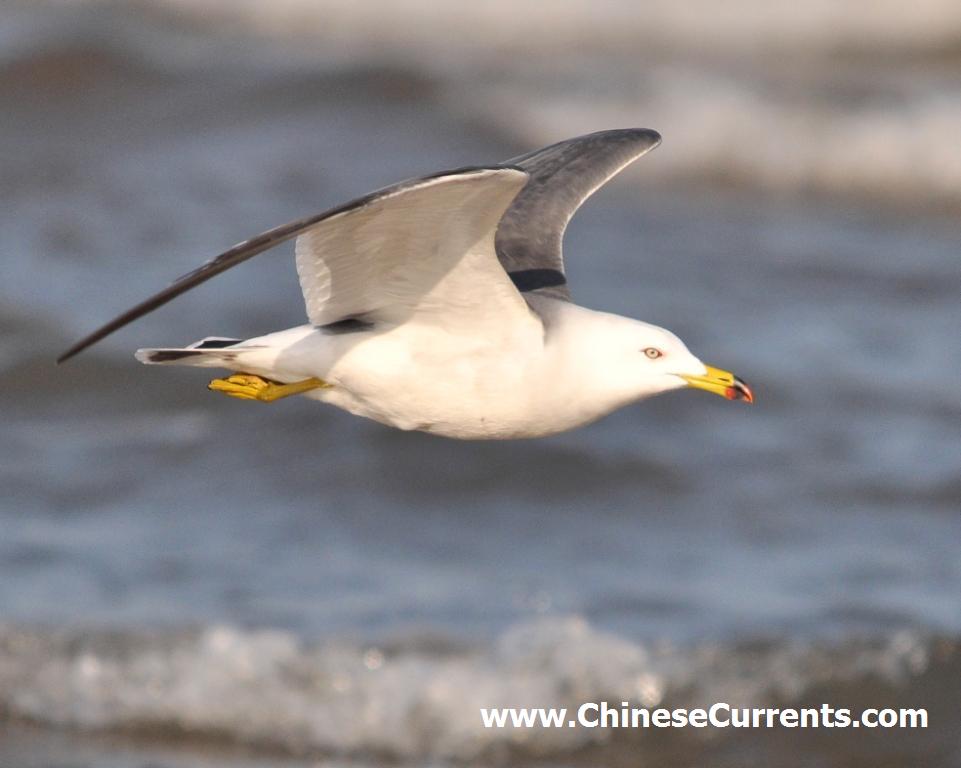
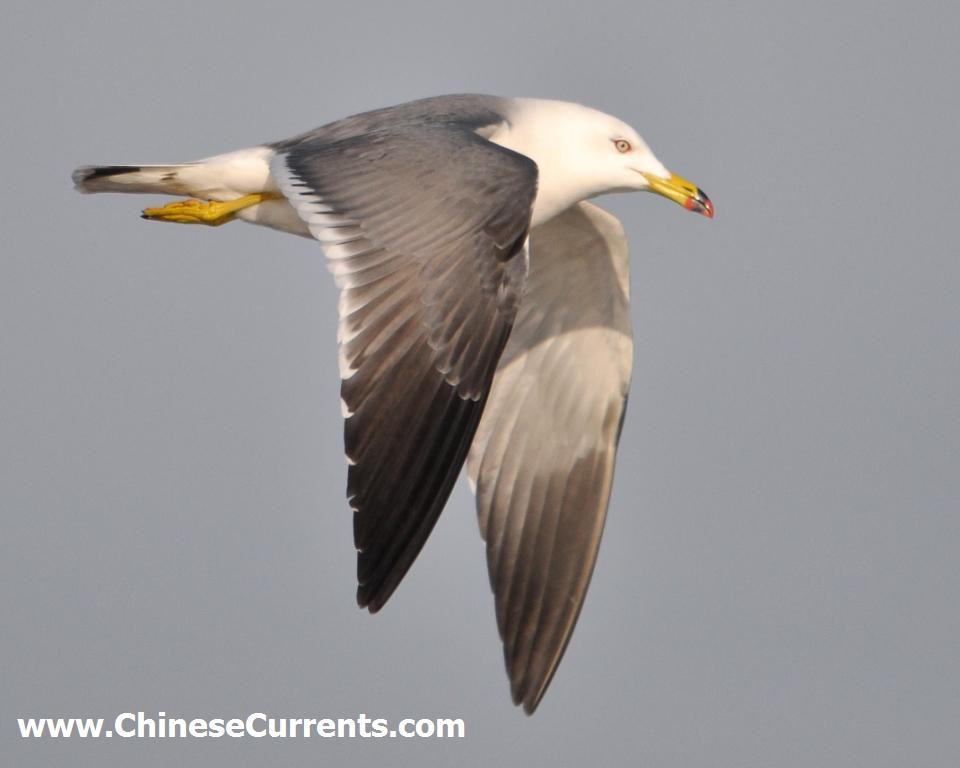
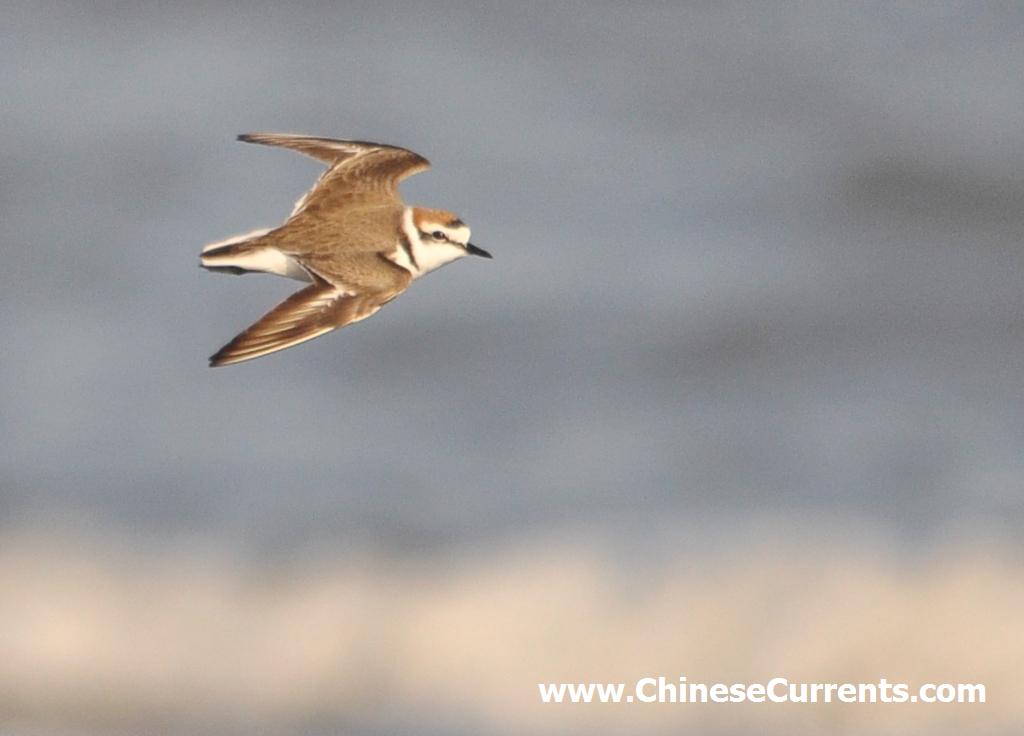
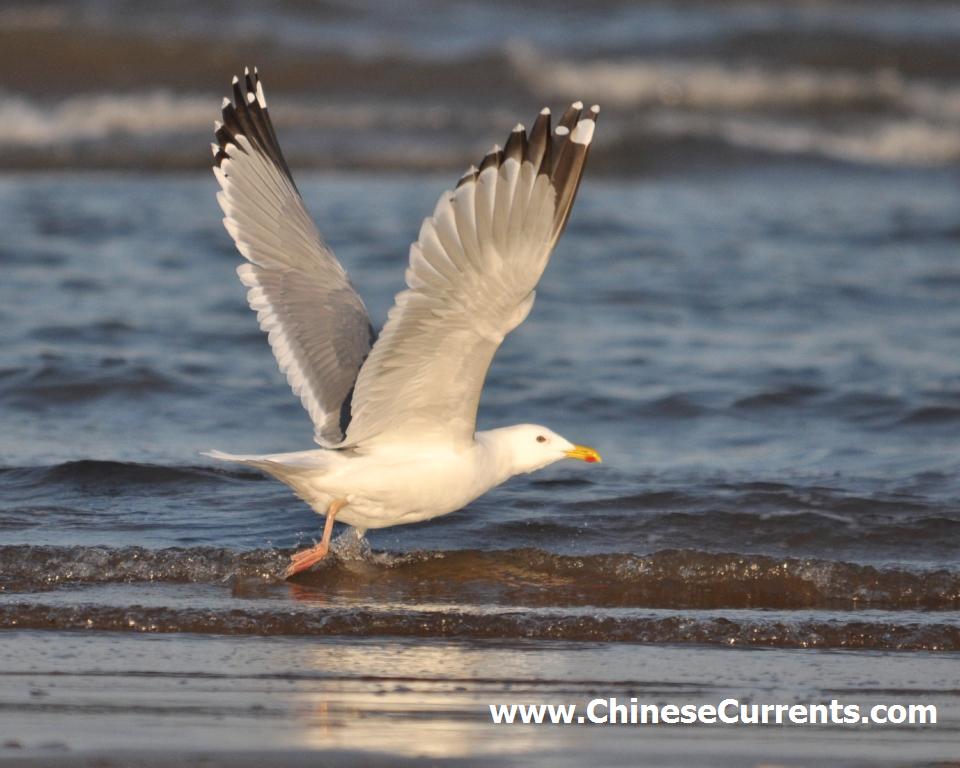
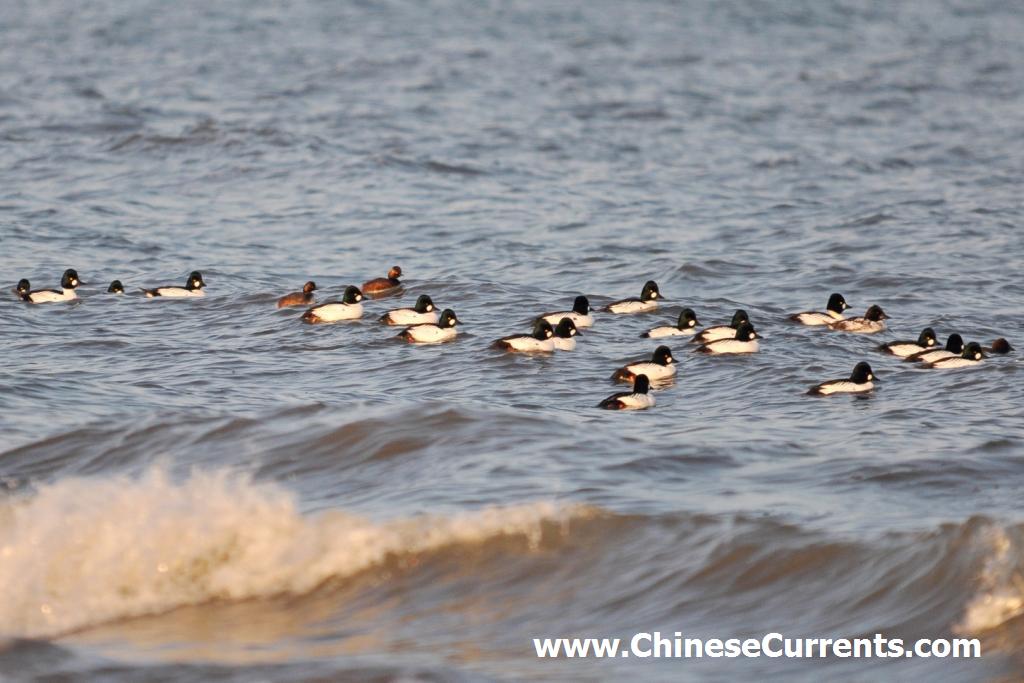
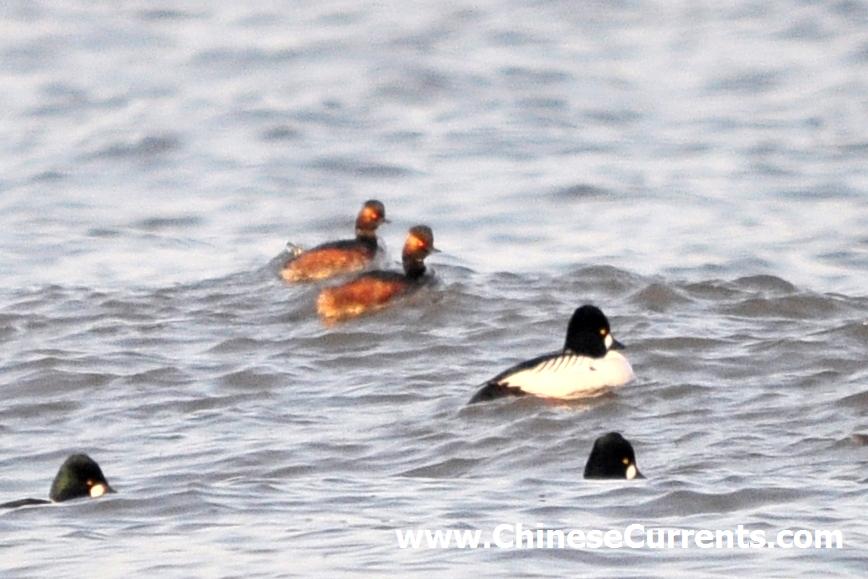
Wednesday, 7th April
Yan Mountains
There are some good mountain areas within 90 minutes drive of Beidaihe, and today
I visited two locations: "Temple Mountain" and the "East Gate" of "Old Peak".
If
you are a bird flying over the area, Temple Mountain must look like an oasis. This pines here are outstanding - not just because
the are surrounded by denuded slopes - but also that there were more Chinese Nuthatches (photo) here than
I have seen at any other location. I had so many sightings in the two hours there that I tend to think that there were three
pairs, although it could have been that one of the pairs was ranging widely.
As well as the nuthatches, there were
three or four Pallas's Warblers, at least one Yellow-bellied Tit, one Goldcrest, c40 Vinous-throated Parrotbills
(photo), several Brambling and a pair of Songar Tits. I was particularly interested in the Songars because I hadn't photographed
them so far this year - but try as I might, I could only manage photos of the branches they had just perched on. Also, the
three Bluetails I saw here confirmed what I suspected - that this "oasis" would be a good migrant stop-over.
I also saw a Chinese Nuthacth about 1KM up from The East Gate of Old Peak (which remains a well-forested protected
area I'm pleased to report). Also there, several Godlewski's Buntings (photo) and a Songar Tit
(257) that did make it on to the memory card.
Near here, a party of 4 or 5 Common Swifts graced the hillside.
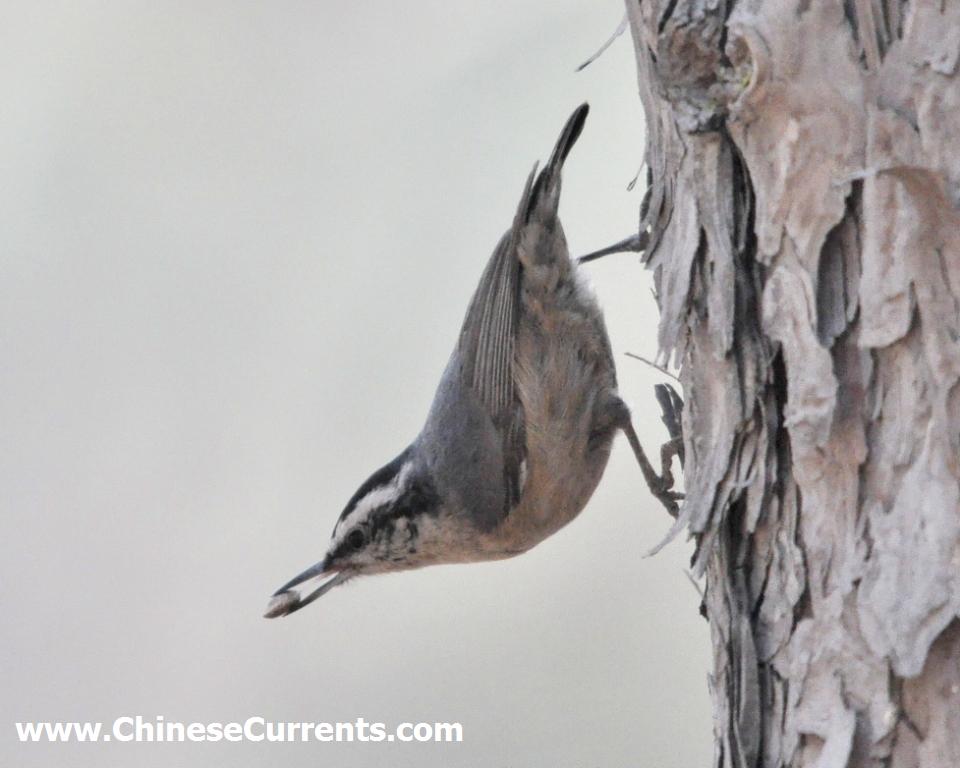
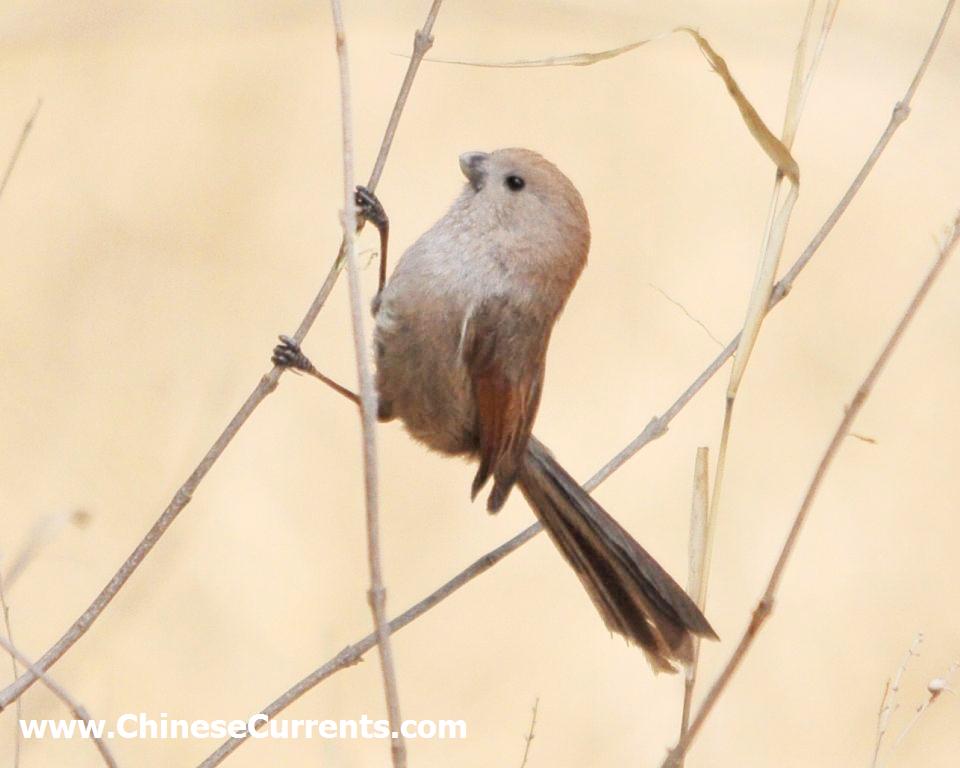
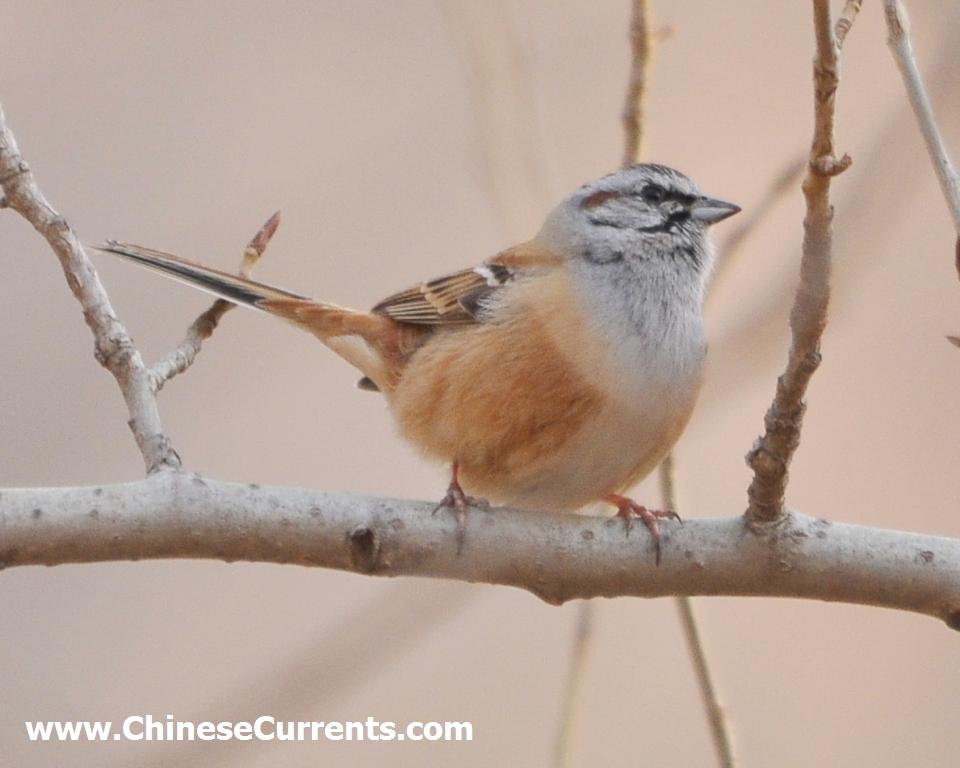
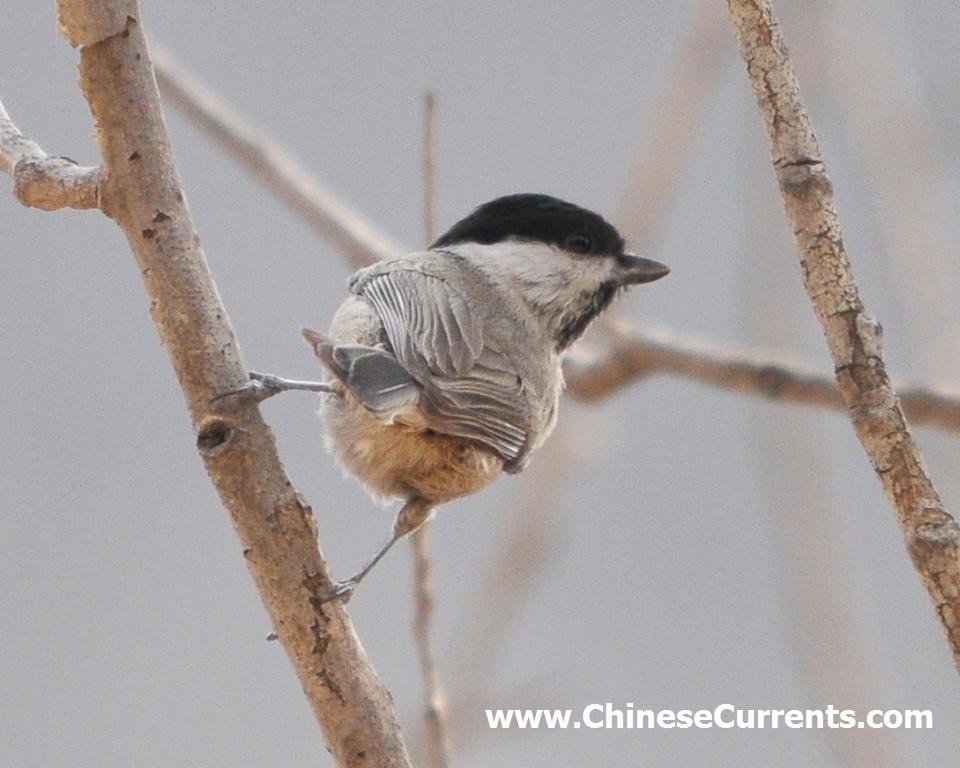
Thursday, 8th April
Qilihai, 3.30 to 5.30pm If you have a 6 year-old, then the beach at Qilihai is a great place to go. Sahara-like sand dunes,
and the best beachcombing on the coast. But, as much as I enjoy hunting for beautifully-patterned shells, I just had
to take my camera along... "just in case". Just as well, because I saw something that I suspect is quite an unusual sight - 3 "bean"
geese flying over the sea. "Bean" geese per se can be expected at this time of year, but I certainly didn't
expect to see both types of them flying together. Unless I've completely lost the plot (don't bet against it), then
the photos show a serrirostris ("Tundra"), sandwiched between two middendorffii ("Taiga")
258. Mark Brazil in his East Asia book sums it up very well indeed: "Taiga slightly larger,
with longer, more slender bill and more Whooper Swan-like head and bill shape. Tundra has shorter, thicker neck, rounder
head and stubbier bill..." And,
would you believe it, I found yet another pair of Black-necked Grebe on the sea (one of which was not quite in summer-plumage).

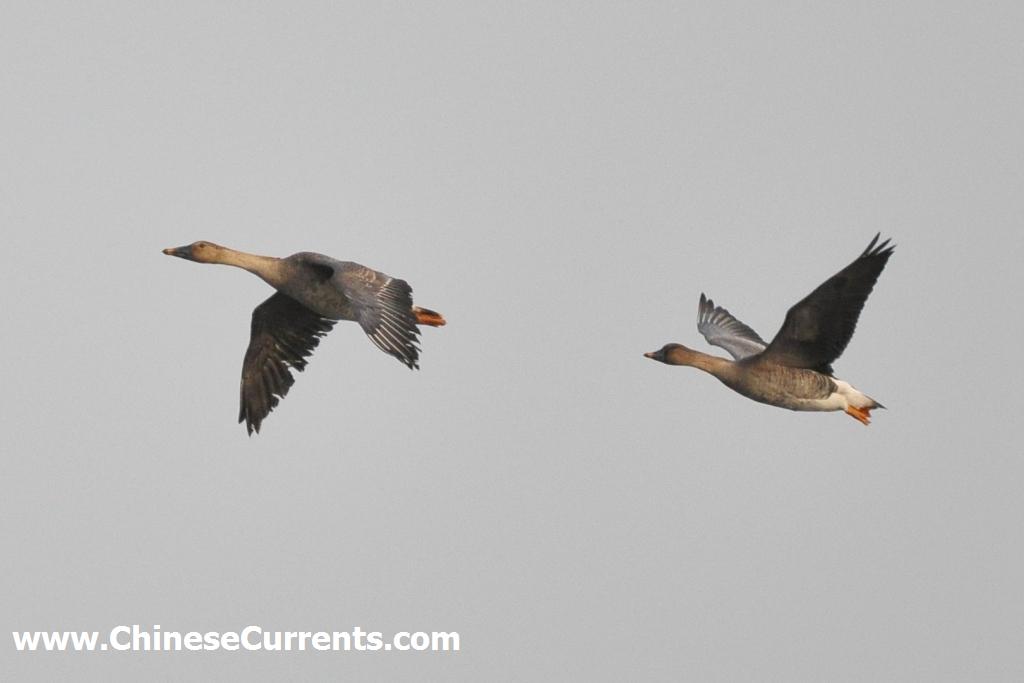
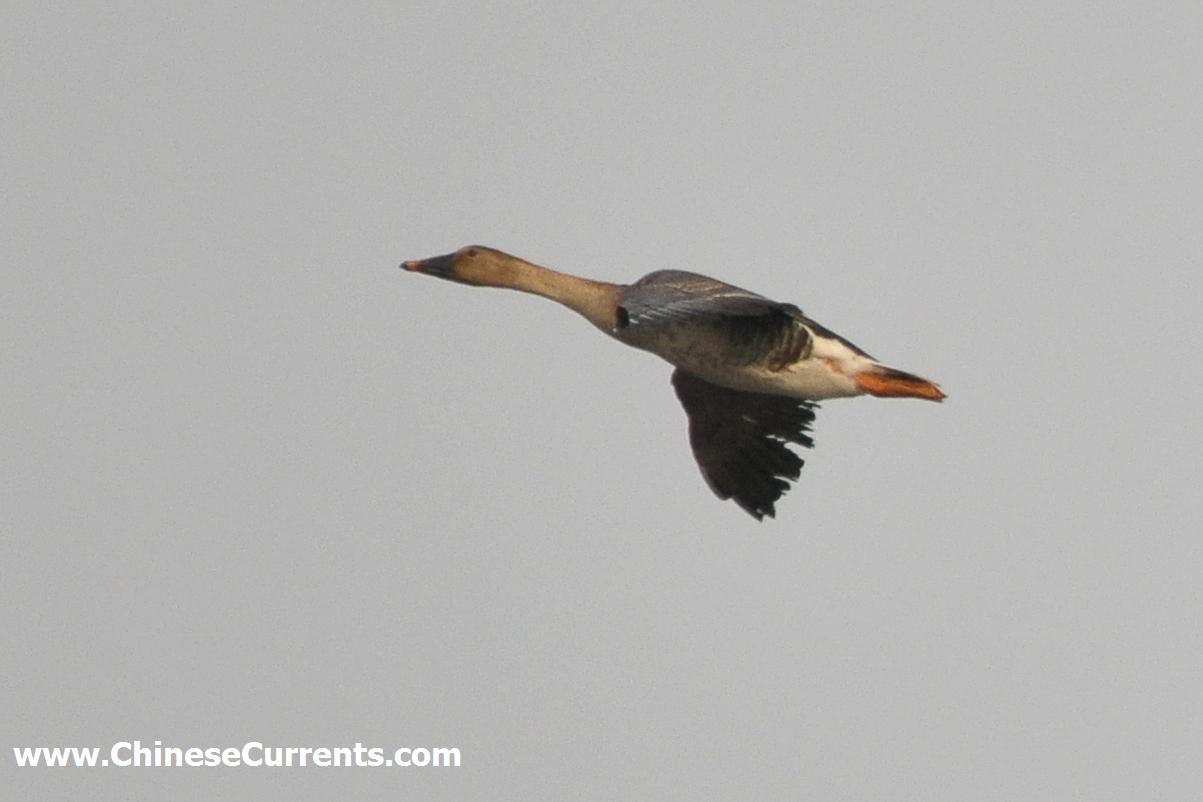
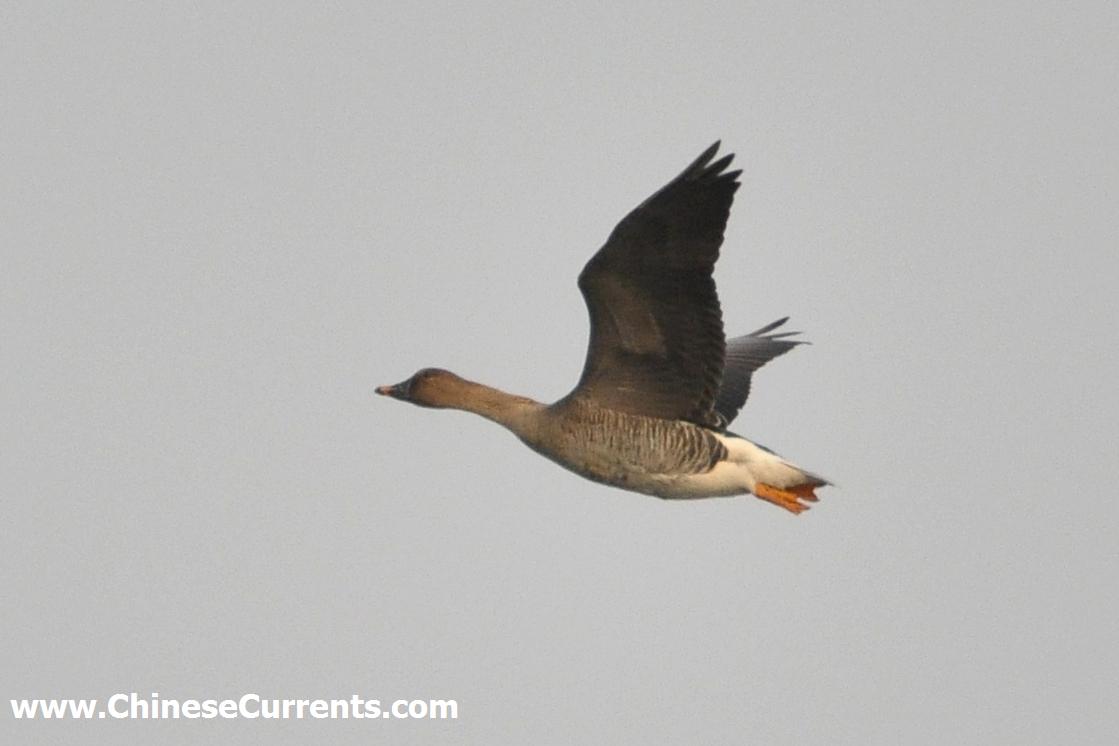
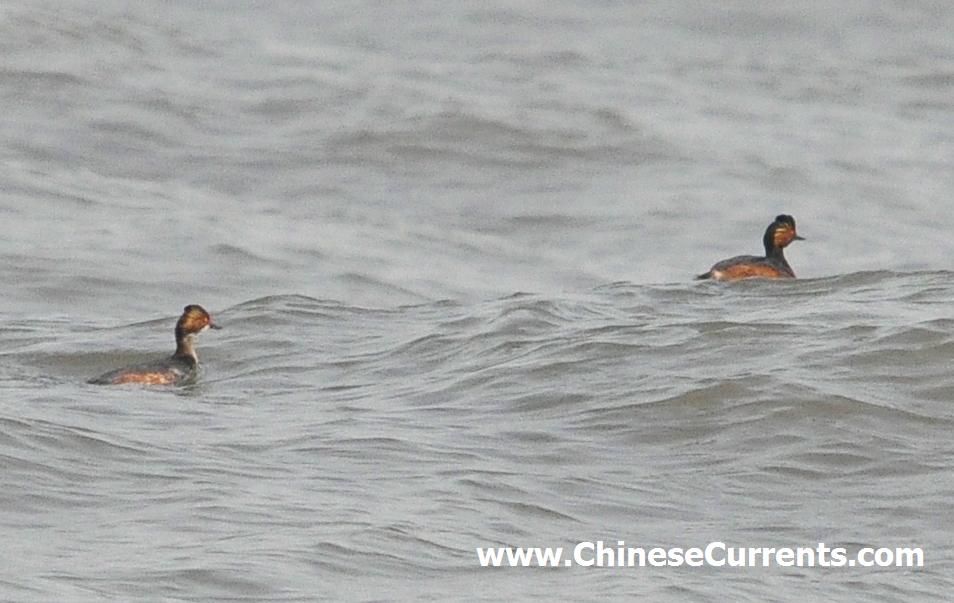
|

